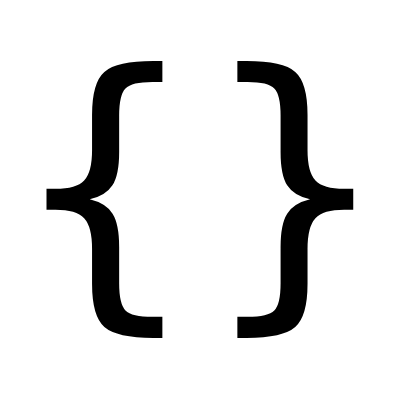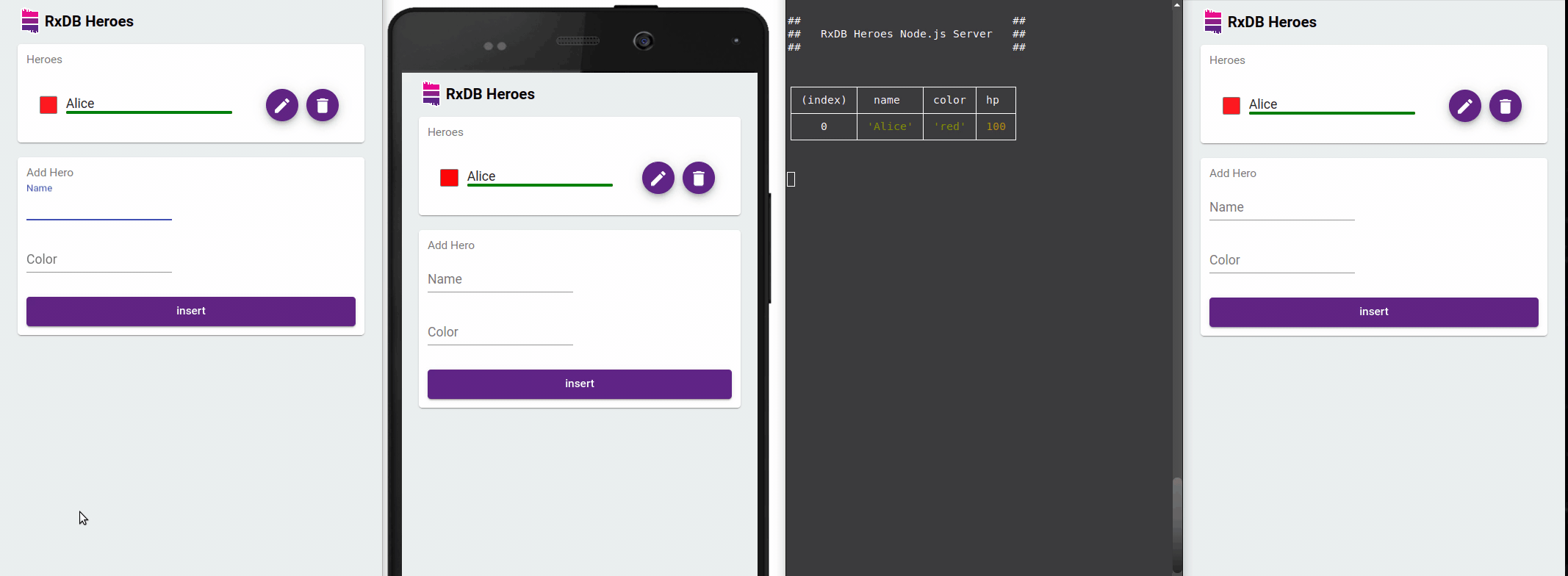JSON-Based Databases: Why NoSQL and RxDB Simplify App Development
Modern applications handle highly dynamic, often deeply nested data structures—commonly represented in JSON. Whether you're building a real-time dashboard or a fully offline mobile app, storing and querying data in a JSON-friendly way can reduce overhead and coding complexity. This is where JSON-based databases (often part of the NoSQL family) come into play, letting you store objects in the same format they're used in your code, eliminating the schema wrangling that can come with a strict relational design.
Below, we explore why JSON-based databases naturally align with NoSQL principles, how relational engines (like PostgreSQL or SQLite) handle JSON columns, the pitfalls of storing data in a single plain JSON text file, and the ways RxDB stands out as an offline-first JSON solution for JavaScript developers—complete with advanced features like JSON-Schema and JSON-key-compression.

Why JSON-Based Databases Are Typically NoSQL
Document-Oriented by Nature
When your data is stored as JSON, each record or document can hold nested arrays and sub-objects with no forced table schema. NoSQL solutions such as MongoDB, CouchDB, Firebase, and RxDB store and retrieve these documents in their “raw” JSON form. This model integrates smoothly with how front-end applications already handle data, minimizing transformations and improving developer productivity.
Flexible, Schema-Agnostic
Traditional SQL tables enforce rigid column definitions and demand explicit schema migrations when you add or rename a field. By contrast, NoSQL solutions accept more dynamic data structures, allowing changes on the fly. This means a front-end developer can add a new field to a JSON object—perhaps for a new feature—without the friction of redefining or migrating a database schema. While this is possible, it is often not recommended.
Aligned With Evolving User Interfaces
As modern UIs frequently manipulate deeply nested or changing data, developers find it easier to store whole objects directly, saving time that might otherwise be spent performing complex joins or normalizing data. For instance, frameworks like React, Vue, or Angular are inherently comfortable with nested JSON structures, which map more directly to NoSQL’s “document” approach than to relational tables.
Is NoSQL “Better” Than SQL?
It depends on your application. SQL remains exceptional for complex aggregations, enforced relationships, and sophisticated transaction handling. But NoSQL is often more intuitive and easier to maintain for “document-first” applications that:
- Thrive on flexible or rapidly evolving data models.
- Rely on hierarchical or nested JSON objects.
- Avoid multi-table joins.
- Require easy horizontal scaling for large sets of documents.
Relational databases are still a top choice for many enterprise back-ends, especially when advanced analytics or strongly enforced referential integrity is needed. But if your application is predominantly storing and manipulating JSON documents (e.g., user profiles, real-time chat logs, embedded items), a JSON-based or document-oriented approach can greatly reduce friction during development.
When to Prefer SQL Instead of JSON/NoSQL
NoSQL solutions—particularly JSON-based document stores—provide a natural fit for flexible, nested data in UI-heavy applications. However, certain scenarios may benefit more from a SQL solution:
- Complex Relationships: If your data demands intricate joins across multiple entities (e.g., many-to-many relationships that can’t easily be embedded in a single document), a well-structured relational schema can simplify queries.
- Strong Integrity and Constraints: SQL excels at enforcing constraints such as foreign keys, unique constraints, and advanced triggers. If your system needs strict data validation and complex business logic within the database, SQL might prove more robust.
- High-End Analytical Queries: Relational databases can handle sophisticated aggregations, groupings, and joins more efficiently. If your app frequently runs advanced SQL queries, a NoSQL approach may complicate or slow down analytics.
- Legacy Integration: Many enterprise systems are built around existing relational schemas. A purely NoSQL approach might mean rewriting or bridging systems that are heavily reliant on SQL constraints and transformations.
- Transaction Handling: While many NoSQL solutions have improved transaction support, it can still lag behind well-established SQL transaction models. If ACID properties and multi-operation atomicity are paramount, you might prefer a tried-and-true relational engine.
In short, if you prioritize advanced relational queries, robust constraints, or complex business rules at the database level, SQL remains a powerful, and possibly superior, choice. For user-centric, fast-evolving JSON data, though, NoSQL or JSON-based solutions often reduce the friction of frequent schema changes.
Storing JSON in Traditional SQL Databases
JSON Columns in PostgreSQL or MySQL
To accommodate the demand for flexible data, several SQL engines (notably PostgreSQL and MySQL) introduced support for JSON columns. PostgreSQL offers the JSON and JSONB types, enabling developers to store raw JSON in a column. You can also index specific paths within the JSON to speed lookups on nested fields:
CREATE TABLE products (
id SERIAL PRIMARY KEY,
name TEXT,
details JSONB
);
-- Insert a record with JSON data
INSERT INTO products (name, details) VALUES
('Laptop', '{"brand": "BrandX", "features": ["Touchscreen", "SSD"]}');Although this approach merges the best of both worlds (SQL queries + flexible JSON fields), it can also create a “split personality” in your schema. You might store stable data in normal columns, while unpredictable or nested details live inside a JSONB field. Some projects flourish with this hybrid design, others find it a bit unwieldy.
Storing JSON in SQLite
SQLite also allows storing JSON data, typically as text columns, but with some additional features since SQLite 3.9 (2015) including the JSON1 extension. This extension can parse JSON text, perform queries on JSON fields, and do partial updates. However, storing JSON in SQLite does require you to ensure you’ve compiled SQLite with JSON1 support or to rely on a library that bundles it. While possible, you still won't get quite the same schema-agnostic ease as a full document store, but it’s a pragmatic solution for smaller or embedded needs on the server side—or occasionally in the browser if you run SQLite via WebAssembly. RxDB uses this in its SQLite storage.
JSON vs. Database - Why a Plain JSON Text File is a Problem
Some developers consider storing everything in a single JSON file, typically read and written directly from disk or local storage. This approach, while seemingly simple, usually does not scale. Key issues include:
- No Concurrency: If multiple parts of the application try to write to the same JSON file, you risk overwriting changes.
- No Indexes: Finding or filtering items in large JSON text requires scanning everything. This is slow and quickly becomes unmanageable.
- No Partial Updates: You often reload the entire file, modify it in memory, then write it back, which is highly inefficient for large data sets.
- Corruption Risk: A single corrupted write or partial save might break the entire JSON file, losing all data.
- High Memory Usage: The entire file may need to be parsed into memory, even if you only need a fraction of the data.
Databases—relational or NoSQL—solve these issues by handling concurrency, enabling partial reads/writes, establishing indexes, and ensuring transactional integrity so you don’t lose everything if the process is interrupted mid-write.
RxDB: A JSON-Focused Database for JavaScript Apps
Many NoSQL databases operate on the server, whereas RxDB is built for client-side usage—browsers, mobile apps, or Node.js. It specializes in JSON documents and embraces an offline-first philosophy.
Key Characteristics
- Local JSON Storage
RxDB stores each record as a JSON document, closely matching how front-end frameworks handle state. This eliminates complex transformations or manual JSON parsing before writing to a table.
- Reactive Queries
Instead of complex SQL, RxDB uses JSON-based query definitions. You can subscribe to query results, letting your UI automatically refresh when data changes locally or from remote sync updates:

- Offline-First Sync
Built-in replication plugins push/pull changes to or from a remote server. If your app is offline, updates get stored locally, then sync up seamlessly once a connection is available.
- Optional JSON-Schema
Though it’s a document database, RxDB encourages you to define a JSON-based schema for clarity, indexing, and type validation. This helps maintain data consistency while still allowing a measure of flexibility for new fields.
Advanced JSON Features in RxDB
-
JSON-Schema: By specifying a JSON-Schema, you can define which fields exist, whether they are required, and their data types. This is invaluable for catching malformed documents early and imposing mild structure in a NoSQL setting.
-
JSON Key-Compression: Large, verbose field names can bloat storage usage. RxDB’s optional key-compression plugin automatically shortens field names in your JSON documents internally, reducing disk space and bandwidth:
// Example: how key-compression can transform your documents
const uncompressed = {
"firstName": "Corrine",
"lastName": "Ziemann",
"shoppingCartItems": [
{ "productNumber": 29857, "amount": 1 },
{ "productNumber": 53409, "amount": 6 }
]
};
const compressed = {
"|e": "Corrine",
"|g": "Ziemann",
"|i": [
{ "|h": 29857, "|b": 1 },
{ "|h": 53409, "|b": 6 }
]
};The user sees no difference in their code—RxDB automatically decompresses data on read—but the overhead is drastically reduced behind the scenes.
Follow Up
JSON-based databases naturally align with NoSQL because they accommodate evolving, nested data without rigid schemas. This makes them appealing for many UI-centric or offline-first applications where flexible documents and agile development cycles matter more than heavy relational queries or constraints.
SQL can still store JSON—whether in PostgreSQL’s JSONB columns, MySQL’s JSON fields, or SQLite’s JSON1 extension. For some teams, a hybrid approach pairing SQL for relational data with JSON columns for more flexible fields works well. However, storing everything in a single monolithic JSON text file is rarely advisable for anything beyond trivial tasks—databases excel at concurrency, indexing, and partial writes.
Tools like RxDB provide an even simpler, local-first take on JSON documents—particularly for JavaScript projects. With offline replication, reactive queries, optional JSON-Schema, and advanced optimizations such as key-compression, RxDB streamlines building dynamic, user-facing features while preserving the core benefits of a robust document database.
To explore more about RxDB and its capabilities for browser database development, check out the following resources:
- RxDB GitHub Repository: Visit the official GitHub repository of RxDB to access the source code, documentation, and community support.
- RxDB Quickstart: Get started quickly with RxDB by following the provided quickstart guide, which offers step-by-step instructions for setting up and using RxDB in your projects.
- RxDB Examples: Browse official examples to see RxDB in action and learn best practices you can apply to your own project - even if jQuery isn't explicitly featured, the patterns are similar.
 Ask a question on the forums about JSON-Based Databases:...
Ask a question on the forums about JSON-Based Databases:...